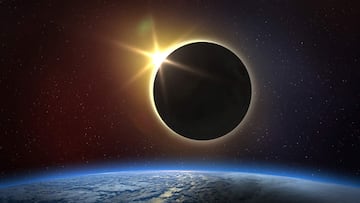What are the main differences between a total solar eclipse and a partial eclipse?
The US is to witness the first total solar eclipse since 2017 after a number of partial phenomena in recent years.

Mark the date: 8 April is the day of one one of the most special lunar events. A total eclipse of the sun will plunge the US into darkness for the first time since 2017. That eclipse lasted 2 minutes and 42 seconds. The next eclipse will be 4 minutes and 26 seconds, making the chances of missing it if you are in its path very unlikely.
Follow solar eclipse in USA 2024 live online: reactions, best images and latest news.
Differences between a total and partial solar eclipse
A total solar eclipse occurs when the Moon fully obscures the Sun when viewed from the Earth. This creates a brief period of darkness during the day, where the Sun’s outer atmosphere (corona) and prominences become visible. To see a total eclipse, you need to be within a specific narrow path on Earth called the path of totality.
A partial eclipse occurs when the Moon covers only part of the Sun, casting its partial shadow, known as the penumbra, on the Earth. The Moon only covers a portion of the Sun, appearing as a dark bite taken out of the Sun’s disc. The Sun remains bright, and there’s no dramatic drop in light or temperature. Partial eclipses can be seen from a much wider region than a total eclipse.
Related stories
Lastly there is the annular eclipse. These differ from the rest since the moon doesn’t fully obscure the Sun, leaving a visible “ring of fire.”
Whatever type of eclipse you witness, it is recommended to use special solar glasses that comply with the ISO 12312-2 safety standard.